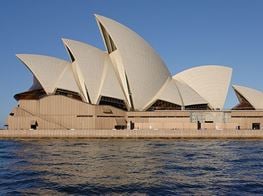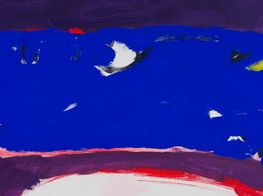Great Expectations: Emerging Australian Art
In literary criticism, the term Bildungsroman refers to a coming of age novel. The protagonist learns a lesson, undergoes a transformation and grows up. They are stories where sentiment conflicts with authority, and we love them because they question our foundations and because we were all kids, once. ‘Emerging’ is the art world’s term for coming of age, indicating a fleeting stage of development for an artist: the first five or so years before they find a security in something like commercial representation or develop a solid reputation that delivers critical and sometimes financial manna.
The enfant terrible belongs to this category of artist, so too the next big thing. But aside from the catch phrases of the art economy, the notion of growth is implicit when using the term, and ‘emerging artist’ is often characterised by the production of conceptually dynamic, innovative and challenging work.
Two recent shows featuring emerging artists, Primavera at The MCA and NSW Artist’s Fellowship at Artspace in Sydney, respectively a survey and a scholarship, were an opportunity to reflect on what it means to be an emerging artist. Curator Robert Crook, in his introductory text for Primavera 2013, described the included artists as ‘thinker-makers’, artists whose labyrinthine work captures you visually and then charges you with the task of thinking your way out of it.
Australian artist Thomas Jeppe, included in Primavera, works across painting, sculpture, installation and beyond the space of the gallery to include small, independently published artists books that address the idiosyncratic preoccupations of the artist. The blurb of Don Carlos (Surpllus 2013), tells us the book is about ‘collecting strategies, aesthetic hierarchies, family dynamics, ethical limits, parallel approaches to art and nature, and the taxonomical urge’. In your hand, it is a short interview and photo essay between Jeppe and Don Carlos Ashida, Mexico's biggest seashell collector. Jeppe has described his practice, as a process of ‘grinding of poetry out of a reference' though it is perhaps best understood as abstract or aesthetic journalism. Whether it’s Don Carlos and his shells or various tea enthusiasts considering the ritual and history of tea in the east and west in Asiatische Adlernase (Edition Taube 2012), notions inherent to the ethics and aesthetics of collection and inquiry are important to Jeppe as he questions the mechanisms of social and cultural representation.
Employing the principles of classification in his study of its rules, Jeppe pursues his subject relentlessly across mediums. In his series of paintings and installations in the exhibition Seaside Vernacular (2013) at Utopian Slumps in Melbourne, Jeppe investigated the difference between a cultures depiction of itself and its reality. Taking their beginnings from the label of a sardine tin portraying working fisherman, the works developed as Jeppe travelled to The Canary Islands to see, first hand, the lives of the illustrated workers. Jeppe, in his pursuit of Social Realism, discovered that pictures lie and in place of the idealized workers he found a gaudy and commercial tourist industry. The suite of paintings and installations, including Belgian Skylight (B) and Belgian Skylight Inversion (B) (2013), are monuments to his research, depicting the architecture of place and space. Ghost of Shipping Container (2013) is a clear plastic installation around these works, built to the dimensions of a standard shipping container, and functioned as a Collector's Lounge for the duration of the exhibition. There is an astounding level of conceptual detail in Jeppe’s work, and humour is both critical weapon and relief. The work details for Ghost of Shipping Container note that ‘Smoking is permitted in the Collector's Lounge.’
Across all Jeppe’s work there is a kind of refraction, where we are privy to all the questions he is asking himself at once. As in most art, there is a distinction between intent and interpretation; between what we see and what the artist tells us we are seeing. But besides the complex narratives mapped out by his research, what holds his work together, and keeps you looking, is the graphic quality of his lines, the signature way he paints the top or bottom sides of his frames and the way his installations critique the very space of the gallery itself.
Where Jeppe journeys to and makes work in the places he seeks to depict, Sydney based Marian Tubbs is an armchair traveller and her concerns lie in how we reconcile nature with our virtual world. In her videos and large-scale photographic assemblages, included in the NSW Visual Artists Fellowship at Artspace in Sydney, nature is depicted as if by someone who has never seen it. Animals populate incongruous landscapes, dark columns and cycles of colour interrupt natural scenes. In the digital print Vulnerable Landscape (2013), the maple frame surrounding the image of columns and a horizon, creating a tension between the natural and the artificial, is incomplete and implies a landscape in flux. Tubbs uses the visual language of screen technologies in her articulation of our complicity with them, and there is a ‘screensaver’ aesthetic to her digital prints and videos. Tubbs, delighting in paradox, emphasises the contradiction between nature and artifice. The threat implied in this, and what Tubbs is concerned with, is that we are becoming comfortable replacing sensation with knowledge, and that now a picture of a thing is as good as the thing itself.
From her desktop atelier Tubbs creates utopian images and videos from the virtual stockpile of the Internet. But utopias, built from the best bits of a reality, seem ugly and dangerous places. In the fictive documentary Open model for an affective landscape, virtual becomes real when necessary (2013), the voice of nature is simulated through titles that appear on the screen. We learn that if nature had been gifted subjectivity, it would tell us it does not ‘feel celebrated’ and ‘needs a break’. Palm trees spin out of their roots in islands, a dolphin chases its tail in front of a crude depiction of an idyllic ocean, and a yacht emerges from a lounge room wall. This is what it would look like if nature could spam you. And in that balance between opposites, between the real and its virtual depiction, her work makes us aware of how the Internet casts a utopic shadow on the natural world.
Emerging artists can’t defy categorisation, but they can function outside of it. Running concurrently with Primavera at the MCA was String Theory, featuring a range of Aboriginal artists working with expanded notions of textile and craft traditions. Brisbane based artist Dale Harding’s lace work and sculpture stood out, in this survey of contemporary Aboriginal art, for his utilization and adaption of traditional craft to tell a collective story. Harding, completing his Bachelor of Fine Art with Honours at Griffith University, is fast emerging as an artist of difference.
Harding, a descendant of Bidjara and Ghungalu peoples from Central Queensland, takes the stories he’s been told by his extended family and community, stories that have at times been actively suppressed, and lets them play out conceptually through fabric and wood, twine and lace. Harding’s bright eyed little dormitory girls (2013) is a work that literally re-dresses injustices carried out against Aboriginal people in Australia, specifically against Harding’s own great-grandmother, grandmother and mother who, as children and adults, were forced into years of unpaid domestic servitude. Many children used as domestic servants were often forced to wear these painful and humiliating hessian dresses as a form of punishment, printed with alphanumeric code correlating to each child, the dresses are symbolic of generations denied their personhood. Harding’s Hessian dresses are not anatomical - he has not left holes for their arms - and they carry a sense of bodies interrupted or straightjacketed. But like a tailor intent on repairing the past, and in line with Harding’s politically and personally motivated practice, he has sewed mohair embroidery into the collars of the rough hessian dresses as a form of reparation.
As with Jeppe and Tubbs, Language matters in Harding’s work, and the replacement of peoples names with numbers, as depicted by the stamps on the dresses in bright eyed little dormitory girls or the breast plates in Unnamed (2009), was a type of linguistic genocide that negated Aboriginal identity and sought to erase a people. Harding uses not just the narratives of the women in his family but also their craft and his craftsmanship, drawn from this tradition, has a twofold effect. The works are deftly made, beautiful objects, subtly subverted through added materials. But they also recall something of the “Museum of man”, where cultures are displayed as cabinets of curiosities. Harding is truly a ‘thinker-maker’, critical not only of his subject but the way we view of it.
Surveys, prizes and categories are impossible to discuss without mentioning that there are more artists worth mentioning than those selected. But interestingly, the three emerging artists discussed here have a shared concern for ruins – cultural or natural. Ruins, as these artists suggest, tell us what was and hold promise for what will be.
Perhaps it’s best if they never grow up.












































































































































































